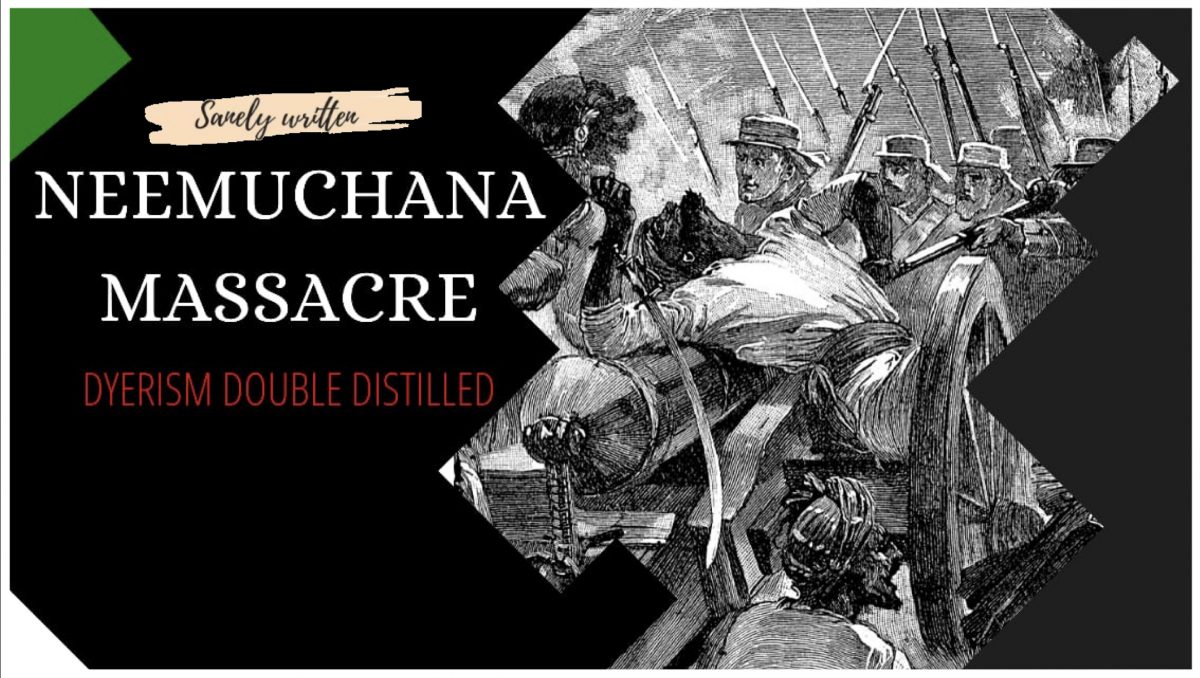We have heard stories of the inhumane genocide of Jallianwala Bagh committed by the British army led by General Dyer. Almost 1000 people were killed and many more were injured while holding a silent protest on the day of Baisakhi in 1919. But there was another massacre, one that was more heinous and brutal, one that was termed as “Dyerism double distilled” by Mahatma Gandhi because this time the people slaughtered were innocent farmers of the princely state of Rajasthan.
For a period of at least 50 years, the poor peasants of Alwar were hugely tormented by the native rulers and the British in the name of land revenues. The first regular land assessment was done in 1876. It increased the assessment by 6 percent and fixed the total demand at 20 lakh rupees per year till 1900. Similarly, some more assessments were conducted in the region and ultimately, the total annual demand was increased to 30 lakh rupees, almost 50 per cent. Instead of giving some concessions to the farmers, their Biswedari rights were also taken. The farmers had to work even harder than before and no assistance was offered to them.
One of the main reasons for such a sudden increase in the value was to support the British during the First World War. The rulers started raising the money through land revenues as “War-funds” in order to meet the British necessity and for the expansion of their army. Food grains were also provided by the rulers. But such an increase in expenditure hit the lavish lifestyle of the princes and this was not acceptable to them. So, they put the entire load on the helpless farmers. All this caused so much trouble to the peasants that they suffered shortage of daily use essentials and food for their families. The distress was so high that they were forced to oppose the demands of the rulers. Soon, an agitation started in October 1924 to nullify the rates at which they were collecting the land revenue and to switch to the previous rates. Several meetings and gatherings of the Rajput peasants were done which was led by Madho Singh and Govind Singh. Soon a resolution was passed and they decided not to pay the revenue dues to the state officials unless the rates were settled. About 200 Rajput peasants attended the All India Kshatriya Mahasabha session in 1925 and requested the other members of the Mahasabha to support their cause against the tyranny of the Alwar rulers. Their cries were heard by the Mahasabha members and they published a pamphlet of the Rajput grievances named “Pukar” and distributed them in and around the Alwar region. Several meetings were held regarding the same and their grievances were strongly raised. Their requests included:
● The Rajput peasants should be given some more privileges that were not given before.
● The cattle grazing tax that were imposed on them should be demolished.
● The road connecting Alwar to Bansoor [Bansur] and Thanaghazi tehsils which were closed before should be opened.
● The land holding revenues should be settled at the previous rates and not at the current rates.
● The auction of the Banjar (infertile and un-irrigated land) zameen should be stopped.
● No labour should be taken as a Begar.
● Because of an increase in the number of wild animals, the crops were destroyed and the production was going down, so they demanded permission for the killing of the wild animals.
They decided to present their demands to the Maharaja of Alwar, who turned a deaf ear to them. So, they approached the agent of the Governor General. The Alwar King was very much annoyed by this move of the peasants.
Seeing no signs of assistance from the British and the rulers, the helpless peasants formed a union and decided not to pay the land revenue until their demands were fulfilled. As a response and in order to suppress the union, the state officials decided to seal the existing grains in the granaries. But this move by the state officials did not fulfill their expectations and the peasants started a demonstration against them and assembled at Neemuchana on 14th May 1925, to show their solidarity, unaware that prior to this day, i.e. 13th May 1925, the police and the state army, 500 in number, equipped with machine guns and other weapons had arrived in the village. They surrounded the village completely blocking all entry and exit points, covered the wells and blocked the escape routes. The helpless peasants, who were fighting for their survival were trapped inside, no way to go, when the troops open fired on them without any kind of warning. The troops used the machine guns and kept firing on the farmers for 42 minutes. Soon the air was filled with the cries of the peasants and the smoke that came out from the burnt houses was all around Neemuchana. The Alwar ruler and the British didn’t stop here. The leaders of the agitation- Madho Singh and Govind Singh were imprisoned and were trialled in courts in June 1925. Balbir Singh, a resident of Tehsil Thanaghazi of Alwar state also died in the indiscriminate firing. Several others were imprisoned where they went through serious tortures.
Heights of reprobation were crossed by the Alwar ruler Jai Singh when he formed a commission to look into the happenings of Neemuchana. The committee falsely reported death of only 13 people and 12 injured while 3 were missing. It also gave information about a property loss of worth ₹ 11,000 and around 114 houses were burnt to ashes. An unofficial committee with Mani Lal Kothari (as president) and Ramnarayan Choudhary (as Vice president) came out with a report which gave a completely different picture of the incident. It said that property worth ₹ 1,50,000 was lost and the death toll was around 95, 250 were injured and 353 houses were burnt down.
The Indian National Congress held its annual national meeting in Kanpur in 1925 where the leaders of the Desi Rajya Praja Parishad (Their conference was also held in Kanpur) informed Gandhiji about the cruelty of the Alwar rulers and also about the Neemuchana massacre. He said “… if all reports published are true they are proof of Dyerism double distilled…”. The Neemuchana massacre reminds us how the voices that were raised against the British and the native rulers for the injustice and atrocities were suppressed with a brutal genocide of innocent lives.
Reference/s:
● Peasant Unrest and repression: A massacre in Neemuchana, Alwar, May 1925 by Rajesh Kumar
● Dictionary of martyrs of India’s Freedom struggle




4 replies on “Neemuchana Massacre”
Very nice work.
Keep going
Beautifully narrated!
Impressive writing
Its good written